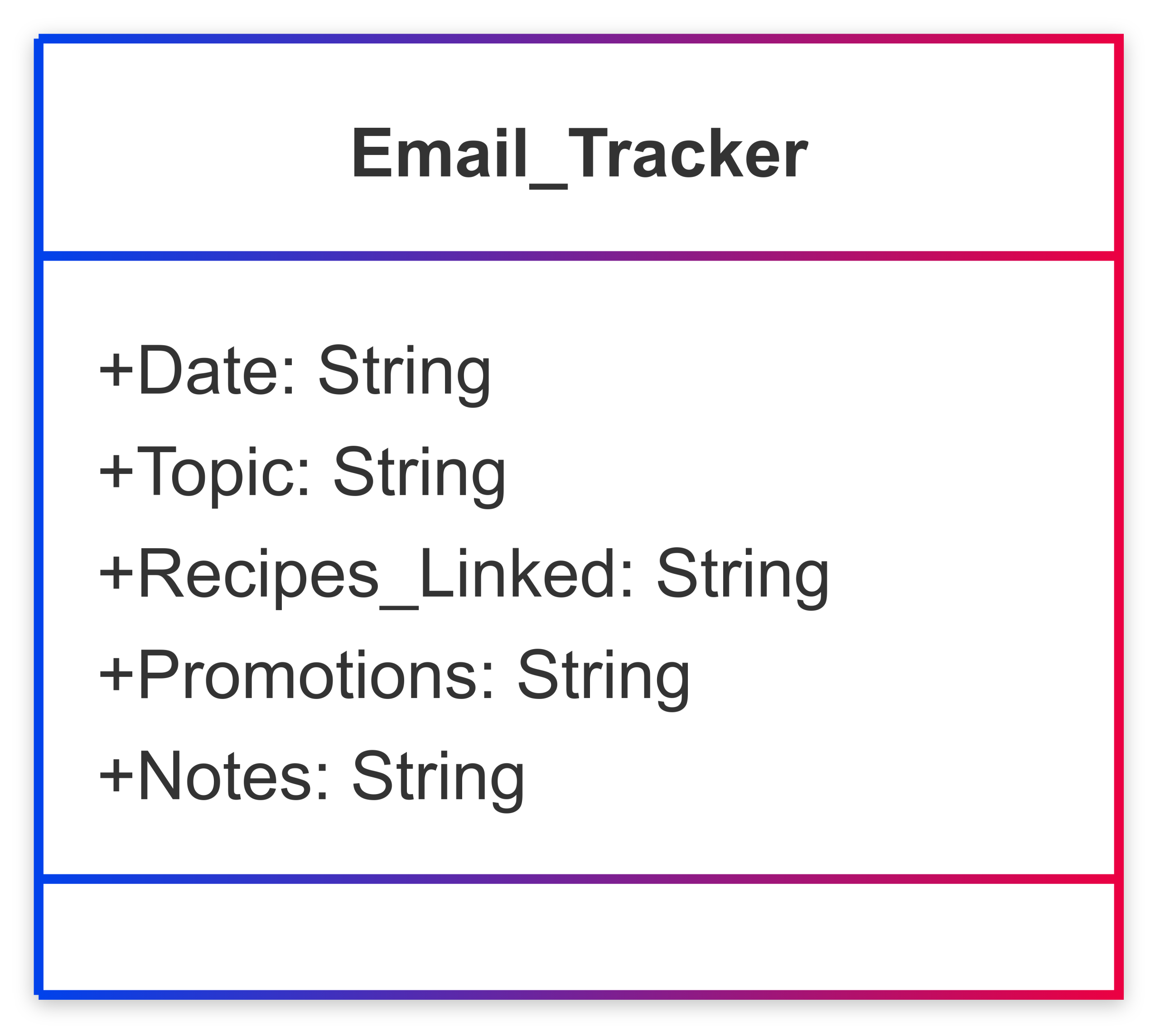Email newsletters are a powerful tool for food bloggers to connect directly with their audience, drive engagement, and monetize their content. Unlike social media or blog posts, newsletters land directly in subscribers’ inboxes, offering a personal and commercial platform to share recipes, tips, and promotions. This article provides 25 actionable content ideas tailored for food bloggers, along with strategies to repurpose existing content, choose the right email service, and maintain consistency. With a focus on delivering value and building trust, these ideas will help you craft newsletters that keep your audience hungry for more.
Why Email Newsletters Are Essential for Food Bloggers
Email newsletters offer unique advantages that make them indispensable for food bloggers:
- High ROI: According to industry data, email marketing yields an average return of $40.56 for every dollar spent. For solo bloggers, this ROI can be even higher due to low overhead costs.
- Cost-Effective: Services like Mailchimp and ConvertKit offer free or affordable plans for small lists, making it easy to start without breaking the bank.
- Direct Connection: Unlike blog posts or social media, emails reach subscribers personally, fostering loyalty and encouraging repeat visits.
- Commercial Nature: Subscribers expect promotional content in emails, unlike blog posts where sales pitches may feel out of place.
- Beyond Social Media: Social platforms are great for engagement, but their fleeting nature and algorithm changes limit their reliability compared to email.
Neglecting email marketing means missing out on traffic and revenue. Every visitor who doesn’t subscribe is a lost opportunity to bring them back. Start building your list now, and use the following content ideas to keep your subscribers engaged.
Choosing the Right Email Service
Selecting an email service is the first step to launching your newsletter. Here’s a comparison of popular platforms suitable for food bloggers:
| Service | Free Plan | Paid Starting Price | Best For |
|---|---|---|---|
| Mailchimp | Up to 2,000 contacts | $9.99/month | Beginners, small lists |
| ConvertKit | No free plan | $29/month | Content creators, advanced users |
| ActiveCampaign | No free plan | $9/month | Advanced automation features |
- Mailchimp: Ideal for beginners with its user-friendly interface and free plan for small lists.
- ConvertKit: Tailored for creators, offering robust segmentation and automation for targeted campaigns.
- ActiveCampaign: Best for bloggers planning complex automation workflows as their list grows.
Tip: Start with a free plan like Mailchimp’s to test the waters, then upgrade as your list and needs expand.
Setting Up Your Newsletter
To launch a successful newsletter, follow these steps:
- Add Sign-Up Forms: Place simple forms (name and email only) in high-traffic areas like your blog’s sidebar, footer, or pop-ups. Use tools like WPForms for WordPress integration. Offer clear value, e.g., “Get exclusive weekly recipes.”
- Create a Template: Use your blog’s branding (colors, fonts, logo) and high-quality food images. Keep it mobile-friendly and clean. Optimize images (JPEG for photos, PNG for graphics) to ensure fast loading.
- Set a Schedule: Aim for 2–5 newsletters per month, sent on Tuesdays, Wednesdays, or Thursdays between 9–11 AM or 2–3 PM for optimal open rates. Consistency is key to avoiding subscriber fatigue or unsubscribes.
Metric Goals:
| Metric | Target |
|---|---|
| Open Rate | 15–25% (35% in food industry) |
| Click-Through Rate | 2%+ |
| Unsubscribe Rate | <0.5% |
Track performance using your email service’s analytics and A/B test subject lines and send times to optimize results.
25 Email Newsletter Content Ideas
These ideas are designed to spark creativity, deliver value, and drive engagement. Mix and match them to suit your niche, and experiment with single-topic or multi-topic newsletters.
- Weekly Roundups: Share updates on your blog, including new recipes, cookbooks you’re reading, or cooking classes you’re teaching. Link to relevant content and include non-blog updates like industry news or curated recipes from other sites.
- How-To Guides: Provide step-by-step instructions, such as mastering a cooking technique (e.g., knife skills). Link to affiliate products like cookbooks or tools to monetize the content.
- Educational Series: Create a multi-week series on a topic like “Introduction to Vegan Baking” or “Mastering Italian Cuisine.” Each email builds on the last, keeping subscribers engaged over time.
- Checklists: Offer printable checklists, such as pantry staples, meal prep guides, or grocery lists for specific diets. Brand them with your logo for repeated exposure.
- Worksheets and Quizzes: Help subscribers solve problems with interactive content. For example, a quiz to assess their baking skills or a worksheet to plan a week of healthy meals.
- Product Reviews: Compare kitchen gadgets, cookbooks, or meal planning services. Include affiliate links to earn commissions while helping subscribers make informed decisions.
- Facts and Statistics: Share compelling data, like the nutritional benefits of seasonal ingredients. Link to credible sources or your blog posts for deeper dives.
- FAQs: Answer common questions from your audience, such as “How do I store fresh herbs?” or “What’s the best substitute for eggs?” Invite subscribers to submit questions for future emails.
- Industry News Commentary: Discuss trends, controversies, or innovations in the food world, like new plant-based proteins or sustainability practices. Spark conversation by asking for subscribers’ opinions.
- Coupons and Promotions: Share exclusive discounts for your products or partner with vendors for special offers. Limited-time deals create urgency and drive conversions.
- Announcements: Inform subscribers about product launches, events you’re hosting, or blog updates. Use email to keep your audience in the loop.
- Contests and Sweepstakes: Run giveaways to boost engagement and attract new subscribers. Promote them across your blog and social media for maximum reach.
- Quick Tips: Share bite-sized advice, like “How to revive wilted greens” or “Three ways to season roasted vegetables.” Keep it simple to encourage action.
- Videos: Embed or link to your YouTube cooking tutorials or curated food videos. Videos add variety and appeal to visual learners.
- Live Events: Invite subscribers to virtual cooking demos or Q&A sessions via platforms like Zoom. Share recordings afterward to maintain engagement.
- Interviews: Feature conversations with chefs, food bloggers, or nutritionists. Share snippets in the email with links to the full interview on your blog.
- Challenges: Launch a 5-day or 30-day challenge, like “No-Sugar September” or “Meatless Mondays.” Encourage subscribers to share their progress for community building.
- Images: Share high-quality food photos, infographics, or memes. Ask subscribers to submit their own photos of your recipes for a chance to be featured.
- Behind-the-Scenes: Offer a glimpse into your kitchen chaos or recipe development process. Personal stories build rapport and humanize your brand.
- Polls: Ask subscribers for feedback on topics like their favorite cuisines or preferred content types. Use responses to tailor future newsletters.
- Blogger Collaborations: Partner with other food bloggers to cross-promote content. Share their recipes or tips in your newsletter, and ask them to do the same.
- Themed Newsletters: Create editorial calendars for themed emails, such as “Summer Grilling” or “Holiday Baking.” Themes simplify content planning.
- Reader Features: Highlight a subscriber’s story or recipe photo each month. Include a mini-interview with questions like “What’s your go-to kitchen tool?”
- Personal Updates: Share non-food-related hobbies, like books you’re reading or shows you’re watching. Ask subscribers for their recommendations to foster two-way communication.
- Sales Pitches: Promote your eBooks, courses, or affiliate products, but limit sales emails to 20% of your content. Balance them with value-driven emails to maintain trust.
Repurposing Old Blog Content for Newsletters
Your blog’s archives are a goldmine for newsletter content. Repurposing older posts saves time and reintroduces valuable content to new and existing subscribers. Here’s how to do it effectively:
- Themed Emails: Create digests around themes like “Taco Tuesday” or “Cozy Fall Soups.” Link to relevant recipes or posts from your archives.
- Menu Emails: Curate full menus, such as “Mother’s Day Brunch” or “Weeknight Dinners Under 30 Minutes.” Include links to appetizers, mains, and desserts.
- Seasonal Emails: Package seasonal content for holidays like Halloween or Christmas. For example, send “5 Spooky Halloween Desserts” with links to old posts.
- Leftover Emails: Post-holiday emails like “5 Ways to Use Leftover Pumpkin” highlight recipes that repurpose ingredients, reducing food waste.
- Tutorial Emails: Bundle tutorials, like “Everything About Pie Crusts,” with links to related posts on techniques or recipes.
- Greatest Hits: Share your most popular or personal favorite recipes, such as “Top 5 Reader-Favorite Desserts.”
Tips for Repurposing Content
- Use a Spreadsheet: Track emails in a spreadsheet with columns for date, topic, links, and promotions. Use a new tab for each year to avoid repetition. Here’s a sample structure:

- Wait 6+ Months: Avoid repeating links too soon unless they’re seasonal or highly relevant.
- Schedule Seasonal Emails Early: Write and schedule holiday emails by September to free up time during busy seasons.
- Searchable Records: A spreadsheet makes it easy to check the last time you shared a specific recipe or topic.
Best Practices for Engaging Newsletters
To maximize engagement, follow these guidelines:
- Catchy Subject Lines: Keep them under 40 characters and personalize when possible (e.g., “Sarah, try this quick dinner recipe!”).
- Conversational Tone: Write like you’re chatting with a friend. Share stories behind your recipes to build connection.
- High-Quality Images: Use natural light and close-ups for food photos. Maintain a consistent visual style aligned with your brand.
- 80/20 Rule: Ensure 80% of your content is helpful (recipes, tips) and 20% is promotional (sales, affiliate links).
- Feedback Loop: Encourage replies by asking questions or inviting feedback. Respond to every email to strengthen relationships.
Growing Your Subscriber List
To expand your list, try these strategies:
- Lead Magnets: Offer freebies like recipe eBooks or meal planning guides in exchange for sign-ups.
- Cross-Promotion: Advertise your newsletter on your blog, social media, and YouTube channel.
- Segmentation: Use tools like beehiiv to segment subscribers by preferences (e.g., vegan, gluten-free) for targeted content.
- Automated Series: Set up welcome emails or drip campaigns to nurture new subscribers.
Following Email Laws
Compliance with email regulations is critical to avoid penalties (up to $51,744 per email). Ensure your newsletters:
- Use honest headers and clear subject lines.
- Mark ads as advertisements.
- Include your mailing address.
- Provide an easy unsubscribe option.
Advanced Tips for Newsletter Success
- Segmentation: Divide your list by engagement level or recipe preferences for personalized content.
- Automation: Create workflows to send recipe series or re-engage inactive subscribers.
- Alignment: Coordinate newsletter content with your blog and social media for a cohesive brand experience.
- Testing: Experiment with send times, formats, and calls-to-action to optimize performance.
Conclusion
Email newsletters are a vital tool for food bloggers to build loyal audiences, drive traffic, and boost revenue. By leveraging the 25 content ideas above, repurposing old content, and following best practices, you can create newsletters that delight and engage your subscribers. Start small, stay consistent, and use analytics to refine your approach. With the right strategy, your newsletter will become a cornerstone of your food blogging success.
For more tips, consider subscribing to a newsletter service like beehiiv to streamline your workflow and take your foodie newsletters to the next level. Happy emailing!
Please share this 25 Email Newsletter Content Ideas for Food Bloggers with your friends and do a comment below about your feedback.
We will meet you on next article.
Until you can read, How I Run My Food Blog – Behind the Scenes
